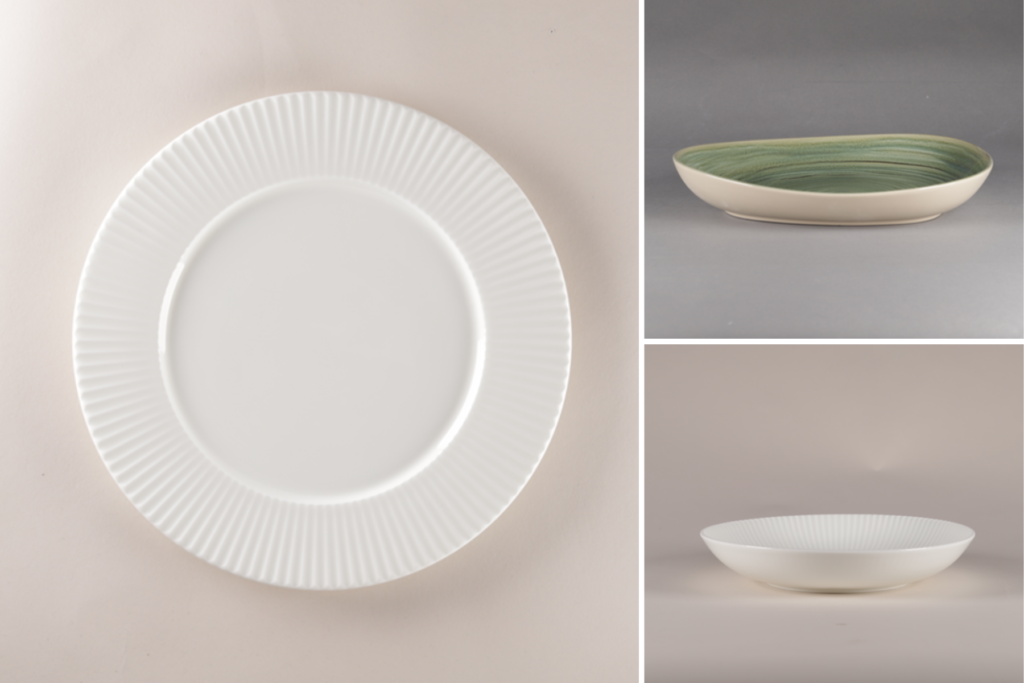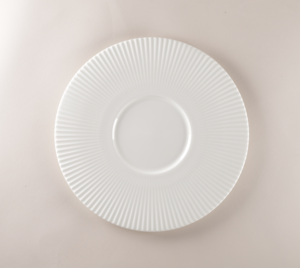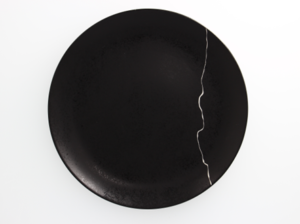 Bone china and colored highlights: The porcelain for the IKA 2024 is designed to encourage the teams' creativity.
Bone china and colored highlights: The porcelain for the IKA 2024 is designed to encourage the teams' creativity.
Gold partner RAK Porcelain will provide the tableware during the IKA/Culinary Olympics 2024. We asked Sven Bodry, Director of Operations, about the latest plate trends and the special features of IKA porcelain.
Interview Anna Häuser Photos RAK

Mr. Bodry, what are the latest porcelain trends?
- Sustainability: A growing number of people are increasingly interested in sustainable products. Porcelain manufacturers are therefore developing more eco-friendly manufacturing processes and using recycled materials.
- Simple design: Minimalistic and simple designs have been very popular for quite some time. Porcelain tableware with clean lines and simple shapes matches well with modern gastronomy.
- Colorful accents: Porcelain dinnerware with colorful highlights or patterns is also in style. Popular colors can vary by season and fashion.
- Individualization: Customers are looking for unique porcelain products that reflect their personal style. Customizable options such as engraving or special color schemes are becoming more popular.
- Retro designs: Sometimes retro designs are also experiencing a comeback. Vintage-style or traditional patterns can bring a nostalgic touch to today’s kitchens.
For the National and Junior National’s “Restaurant of Nations” competition, you chose bone china, including a plate with a diameter of only 12 cm and a wide plate rim. That’s rather unusual for a competition. How did it come to this?

We have been a partner and supplier of the IKA/Culinary Olympics since 2012. We keep a very close eye on current food trends to ensure that our products meet the requirements. In addition, we have very well read the regulations of the competition. Sustainability in terms of reducing food waste is one of the main priorities there. That is why we also decided to use this type of plate. On a plate of 12 cm in diameter, you can arrange an appetizer or a dessert. This is where the creative part of the contestants is encouraged, and that’s what we all want to see at the Culinary Olympics.
Is there a specific reason why there are four plate options to choose from for the three-course menu?
We want to challenge the creativity of the teams to some degree. Our commitment as a partner and supplier of the IKA was never to simply provide round plates for this competition. Logistically, it would be a lot easier for us, no doubt. We would like to see variety in the Restaurant of Nations and actively contribute to the certain wow effect. We believe that the chefs will also be happy with this option. Nevertheless, we are aware that this move will also cause a lot of discussion during the team training sessions. Which dish should go on which plate? That is an extra challenge for the participants. The IKA/Culinary Olympics is the biggest competition for chefs and we would love to see top performances from all of them.
The porcelain set for the (Junior) Chef’s Table also includes green and black plates this time. What influence does the color of the plate have, what do the teams have to pay attention to when arranging the dishes?

The color of the plate can have a significant impact on the way the dish is perceived and it plays a role in the display of food. Here are some aspects teams can consider when arranging food on colored plates:
- Contrast and highlight: The color of the plate can be used to help highlight certain components of the dish. Light-colored meals can look more distinct on a dark plate and enhance their colors and textures. Vice versa, dark food can be more eye-catching on a light plate.
- Harmony and mood: The color of the plate can help create a certain mood or atmosphere. Green plates, for example, can create a fresh, natural or even ecological association. Black plates, on the other hand, can emphasize elegance, refinement, or a modern overall aesthetic.
- Color coordination: When arranging food on colored plates, it is important to consider the colors of the food and the garnishes. A harmonic color scheme can enhance the visual look of the dish. Teams should make sure that the colors of the food contrast or complement the color of the plate in order to create an appealing overall look.
- Details and decorations: Small decorative elements, such as herbs, flowers, or splashes of sauce, can stand out on a colorful plate. Teams can place these elements strategically to add visual interest to the dish and make its display more appealing.
It is important to keep in mind that color impact can be subjective and depends on individual preference and cultural context.
Thank you very much for the interview.
More about RAK Porcelain The IKA Porcelain
